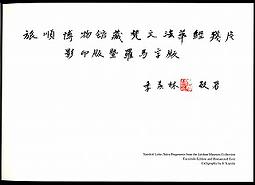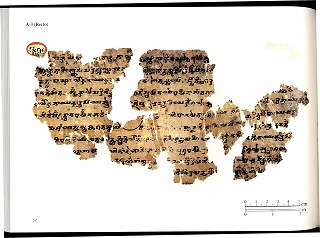⑬ Sanskrit Lotus Sutra Fragments from the Lüshun Museum Collection, Facsimile Edition and Romanized Text (1997)
Published by the Lüshun Museum and the Soka
Gakkai Edited by Jiang Zhongxin
Coordination by the Institute of Oriental
Philosophy
Date of publication: May 3, 1997
Collection of the Lüshun Museum, China
Number of pages: xxxvi + 204 (total 240
pages)
Type of publication: color facsimile
attached with romanized and parallel Chinese texts
Language: Sanskrit, Chinese, English, and
Japanese
-----------------------------------------------------------------------------------------------------------------------------------------------
A large amount of documents and materials
of the Western Regions of Central Asia were collected by the Japanese Otani
Expedition in a series of three trips, first in the period of 1902-1904, then
1908-1909, and finally 1910-1914. The Sanskrit Lotus Sutra manuscript fragments
of different scripts and copy dates (Manuscripts A, B, and C, as well as Set D)
were also found among them. They imply some important information for the study
of Miaofa linhua jing, Chinese
translation of the Lotus Sutra by Kumarajiva. They were stored in Lüshun,
China, rather than being brought back to Japan.
From
1923, the Russian scholar Nikolai Mironov (1880-1936), having stayed at Villa
Ashoka, in Japanese Muyuen, in Chinese Wuyouyuan, in Shanghai at the invitation
of Kozui Otani (1876-1948), the 22nd chief priest of Nishi Hongan-ji temple,
started the arrangement of and research on these fragments, and seemingly
completed transcribing the text into roman letter by 1927. Nalinaksha Dutt
(1893-1973) printed Mironov’s romanized text in the footnotes of his edition, Saddharmapuṇḍarīkasūtram, (aka. Dutt edition, the
Asiatic Society, Kolkata 1953). The fragments were donated to the Guandong
Office Museum (presently the Lüshun Museum) by Count Otani in 1929. Since the
Datt edition including Mironov’s transliteration was published, various
opinions have emerged over the years concerning the manuscripts’ whereabouts.
In
1994, Jiang Zhongxin, a professorial research fellow at the Chinese Academy of
Social Sciences, met with representatives of the Institute of Oriental
Philosophy in Beijing, and discussed the possibility of publishing the results
of his research since 1981 on the fragments. In 1996, color photographs of the
Lotus text fragments were taken, and Sanskrit
Lotus Sutra Fragments from the Lüshun Museum Collection, Facsimile Edition and
Romanized Text was published the following spring. The book is most fitting
for the opening of the Lotus Sutra Manuscript Series in the sense that it has
unraveled the academic issues that have persisted over the years.













